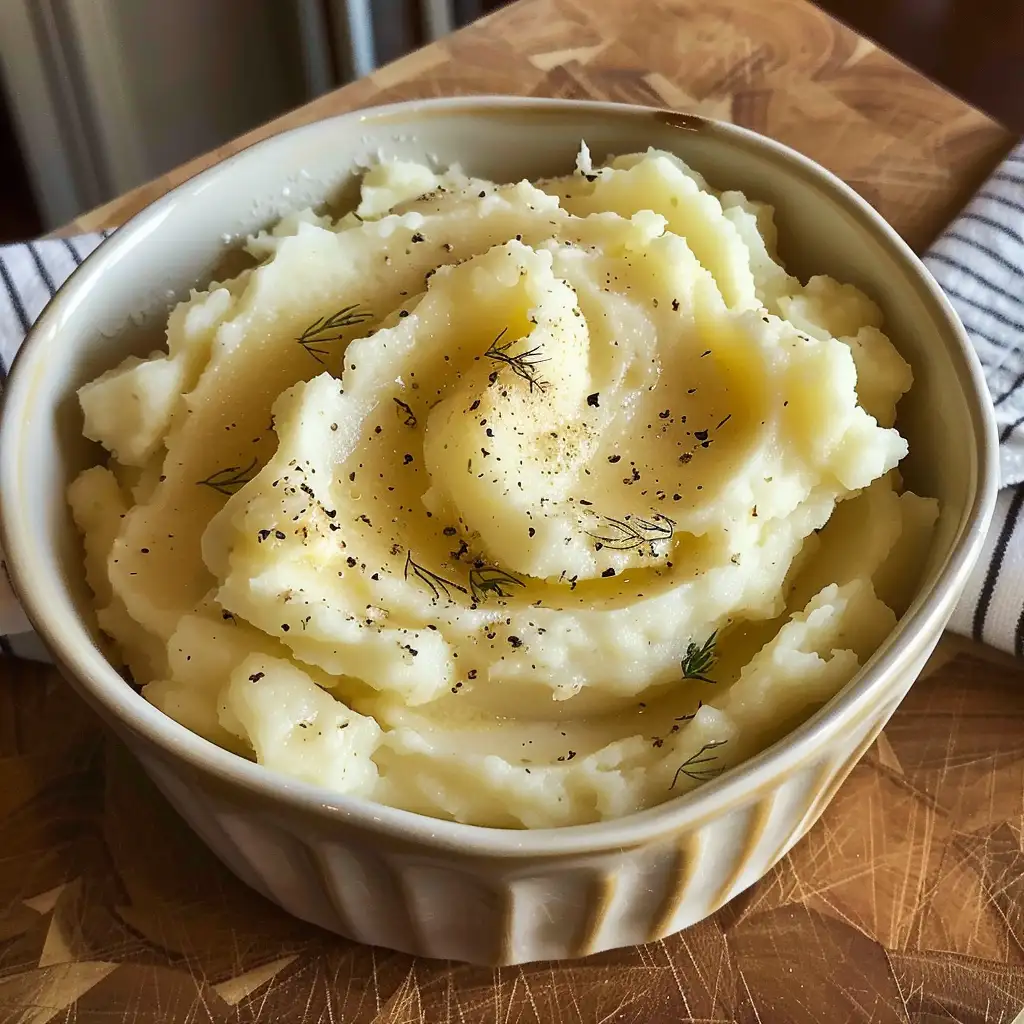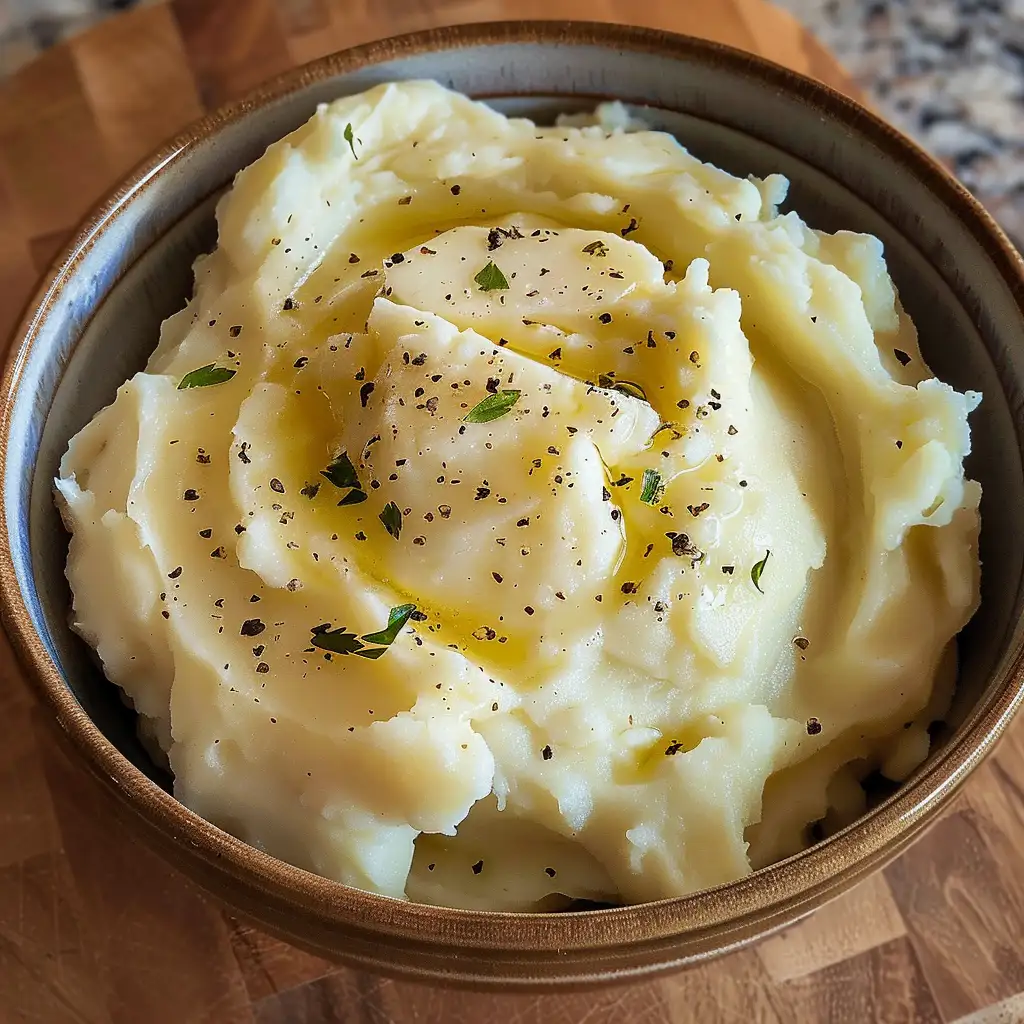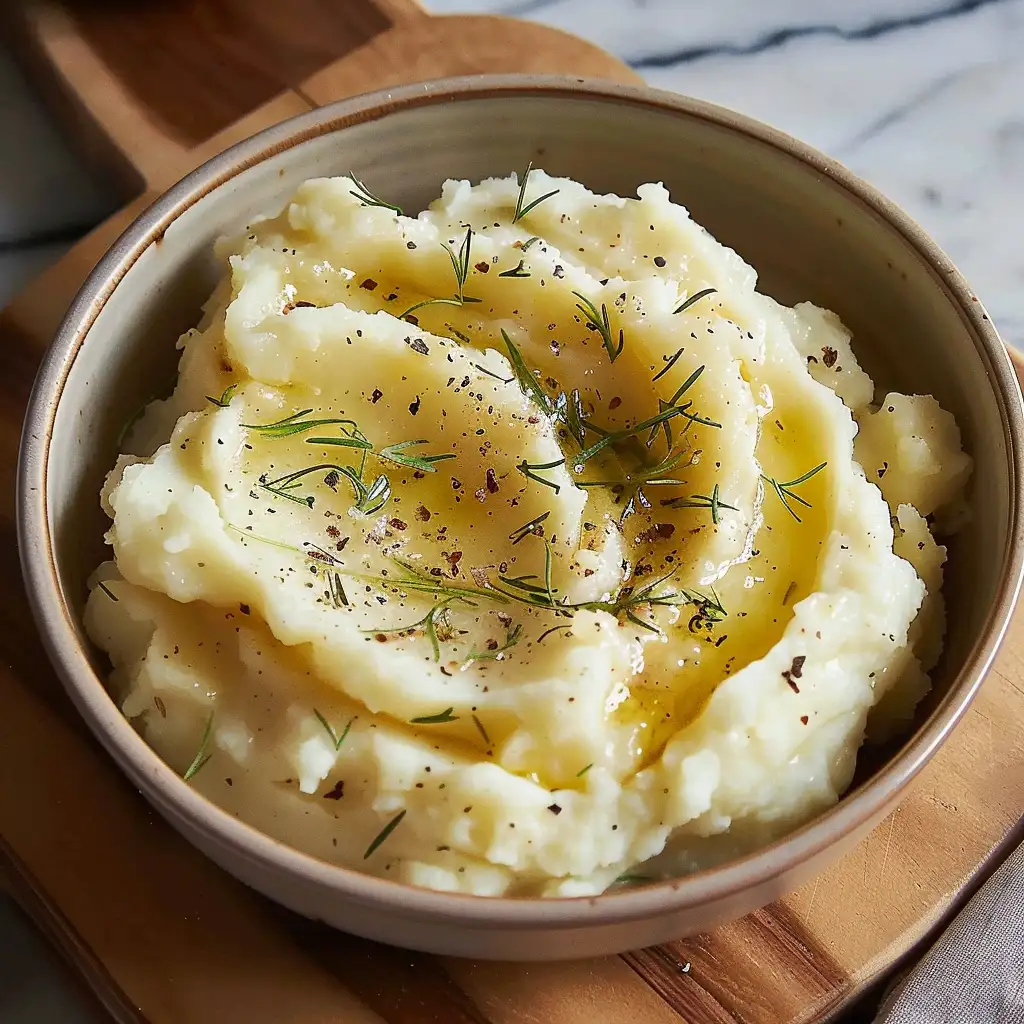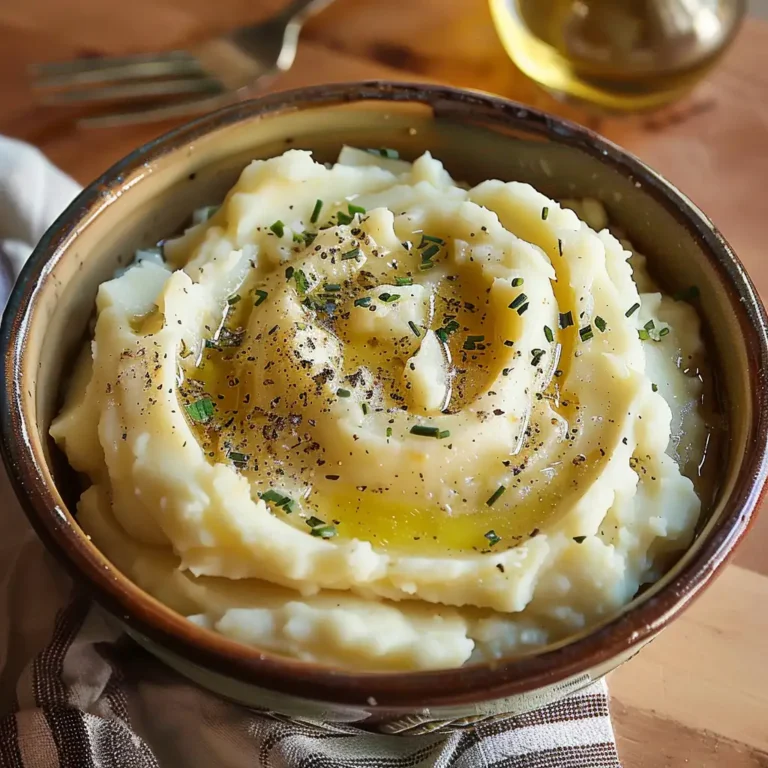Introduction to Mashed Potatoes
Overview of Mashed Potatoes
Mashed potatoes, a staple in many diets across the globe, are not only a side dish but a comfort food cherished from America to Australia. Typically made from potatoes that are boiled and then mashed, they’re often enriched with butter, milk, and seasonings to enhance their flavor. The versatility of mashed potatoes is evident in their ability to accompany a wide range of dishes, including steaks, poultry, and fish. This dish’s simplicity belies its global appeal and foundational role in both everyday family dinners and gourmet offerings.
Cultural Significance
Mashed potatoes hold a rich heritage that mirrors the agricultural practices of a region. Originating from the Andes Mountains, where potatoes were first cultivated, this dish was spread worldwide by European colonialism. Variations of mashed potatoes can be seen in Irish colcannon, which includes kale or cabbage, or the luxurious French pommes purée, which incorporates a generous amount of dairy. These adaptations highlight the cultural adaptation and significance of mashed potatoes, making them a beloved fixture in a plethora of culinary traditions.
Preparing the Potatoes
Selecting the Right Potatoes
The choice of potato is crucial in achieving the perfect consistency of mashed potatoes. The best types for mashing are Russet and Yukon Gold potatoes, known for their high starch content and ability to absorb flavors. Here’s how the choice of potato affects the dish:
- Russet Potatoes: Offer a fluffy texture when mashed and are ideal for a light, airy end product.
- Yukon Gold Potatoes: Provide a naturally creamy texture and a buttery flavor, reducing the need for excessive dairy additions.
Using the right type of potato can significantly dictate the quality of the mashed potatoes, impacting both texture and flavor profiles.
Preparation of Potatoes
Proper preparation of potatoes can enhance both the dish’s flavor and nutritional content:
- Washing: Potatoes should be thoroughly washed to remove any dirt and contaminants from the skin.
- Peeling: Peeling is optional and based on personal preference. For smoother mashed potatoes, peeling is recommended. However, keeping the skin on can add texture and nutrients.
- Cutting Techniques: To ensure even cooking, potatoes should be cut into uniform pieces, typically 1-2 inches in size. This not only helps them cook at the same rate but also prevents the exterior from falling apart before the interior is fully cooked.
Mastering the preparation phase is essential for perfect mashed potatoes and sets the foundation for further flavor enhancements. For more detailed guidance on cutting techniques, visit Bon Appetit’s comprehensive guide.
These foundational steps in selecting and preparing potatoes are pivotal in making your mashed potatoes a creamy, comforting success.

Boiling Potatoes
Step-by-step boiling process
Boiling is the most traditional method for cooking potatoes prior to mashing. Here’s a step-by-step guide to perfectly boiled potatoes:
- Start with Cold Water: Begin by placing your potato pieces in a pot of cold water to promote even cooking.
- Add Salt: Salt the water generously to infuse the potatoes with flavor as they cook.
- Bring to a Boil: Place the pot on the stove, turn the heat to high, and bring the water to a boil.
- Simmer: Once boiling, reduce the heat to a simmer. This will cook the potatoes gently and prevent them from breaking apart.
- Check for Doneness: Potatoes are done when a fork can easily pierce through them. This usually takes about 15-20 minutes depending on the size of the potato pieces.
Ensure not to overcook the potatoes, as this can make them waterlogged and too soft, impacting their texture negatively.
How to check for doneness
To check if potatoes are properly cooked:
- Fork Test: Insert a fork into a potato chunk; it should slide in easily without any resistance.
- Taste Test: Sample a piece to ensure it’s cooked through but not mushy, maintaining a slight firmness.
Alternative Cooking Methods
Besides boiling, you can cook potatoes using a pressure cooker or by steaming:
- Pressure Cooker: This method is much quicker and can reduce cooking time by half. Place potatoes in the cooker with enough water to cover them, and cook under high pressure for about 8 minutes.
- Steaming: Steaming preserves more nutrients than boiling because the potatoes aren’t submerged in water. It also provides a drier initial texture, which is great for mashing.
Both methods are effective but offer different benefits:
- Pressure cooking is faster and better for large batches.
- Steaming is more gentle, preserving the potato’s natural flavor and texture.
For more about the benefits of each method, check out Epicurious’ exploration of cooking techniques.
Mashing Techniques
Basic Mashing
Once your potatoes are cooked, it’s time to mash:
- Choosing a Tool:
- Hand Masher: Provides a coarser, more textured mash.
- Potato Ricer: Delivers a finer, fluffier result.
- Mashing Technique:
- Avoid Overworking: To prevent gluey potatoes, mash the potatoes gently until just smooth. Over-mashing can activate the starches too much and create a gummy texture.
- Don’t Let Cool: Mash while the potatoes are still hot to absorb the dairy and seasoning better.
Using the right tool and technique can dramatically affect the texture of your mashed potatoes.
Enhancing Texture and Flavor
To elevate the humble mashed potato:
- Butter and Milk: These dairy products are key for creamy, rich mashed potatoes. Warm the milk or cream before incorporating for better absorption.
- Seasoning:
- Salt and Pepper: Essential for flavor enhancement. Add gradually and taste as you go to avoid under or over-seasoning.
Incorporating room temperature butter into the hot potatoes will melt the butter evenly, distributing the creamy texture throughout. For a detailed explanation of the role of dairy in mashed potatoes, visit this comprehensive guide.
By carefully mashing and thoughtfully seasoning, you can create a dish that is both rich in flavor and perfect in texture. These techniques will ensure your mashed potatoes are always fluffy and delicious.

Variations and Add-Ins
Customizing Flavor
Enhancing the flavor of mashed potatoes can transform them from a simple side dish to the highlight of a meal. Here are some ideas for add-ins that can spice up your mashed potatoes:
- Garlic: Adding roasted or minced garlic provides a sharp, aromatic intensity.
- Herbs: Fresh herbs like chives, parsley, or thyme can add bursts of flavor and a touch of color.
- Cheese: Stir in grated cheeses such as cheddar, Parmesan, or Gouda for creamy, rich textures and flavors.
- Creative Ideas:
- Mustard: A tablespoon of Dijon mustard for a tangy twist.
- Horseradish: Incorporate a teaspoon or two for a spicy kick.
- Sour Cream: Mix in to enhance creaminess with a slight tang.
These ingredients not only add flavor but also create a more complex dish that can cater to various palates and preferences. Experimenting with different combinations can yield delightful results, enhancing both the taste and aesthetic of the dish. For additional creative ideas, explore Epicurious’ favorite mashed potato stir-ins.
Dietary Adjustments
Making mashed potatoes that cater to dietary restrictions doesn’t mean sacrificing texture or taste. Here are some substitutes:
- Vegan Options:
- Replace dairy milk and butter with almond, soy, or oat milk, and vegan butter or olive oil.
- Nutritional yeast or vegan cream cheese can add depth and a cheesy flavor without dairy.
- Low-Fat Options:
- Use skim milk instead of whole milk or cream.
- Opt for low-fat butter substitutes or a smaller amount of high-quality olive oil.
These substitutions help maintain the creamy texture and savory flavor of traditional mashed potatoes while accommodating dietary needs. For more on making vegan and low-fat mashed potatoes without losing flavor, check out Bon Appetit’s tips for healthier versions.
Troubleshooting Common Issues
Common Pitfalls
Avoid these common mistakes to perfect your mashed potatoes:
- Overmixing Dangers:
- Over-beating potatoes can turn them gluey and pasty. Mash gently to preserve the fluffy texture.
- Underseasoned Potatoes:
- Potatoes absorb a lot of salt; season liberally and taste as you go.
- Lumpy Potatoes:
- Ensure thorough cooking before mashing; undercooked pieces lead to lumps.
- Use a ricer or fine masher for smoother consistency.
Addressing these issues as they arise during cooking will help you refine your technique and achieve better results every time.
Make-Ahead Tips
Mashed potatoes can be made ahead with these tips:
- Storing: Cool completely and store in an airtight container in the fridge.
- Reheating: Reheat in the microwave or oven. Add a bit of milk or cream to refresh the consistency.
- Freezing: Freeze in a sealed container; thaw and reheat by incorporating a little extra dairy.
By following these storage and reheating tips, you can enjoy creamy mashed potatoes that taste freshly made. For best practices on making and storing mashed potatoes, consult Food Network’s guide.
Using these techniques and adjustments, you can ensure your mashed potatoes are always flavorful, creamy, and perfectly prepared.
Serving and Presentation
Proper Serving Techniques
When it comes to serving mashed potatoes, presentation can make a big difference:
- Accompaniments: Choose complements that add color and texture contrast, such as green beans or a rich gravy.
- Garnishes: Sprinkle with fresh herbs like parsley or chives for a pop of color and freshness. A dollop of butter just before serving can also add a glossy, inviting sheen.
- Presentation Styles:
- Formal Dining: Serve in elegant, individual ramekins or include a garnish of herb sprigs and a light sprinkling of coarse salt.
- Casual Dining: Present in a rustic serving bowl, allowing guests to help themselves. Use a wooden spoon for a homey touch.
Proper presentation enhances the eating experience by making the dish visually appealing and inviting. For tips on plating techniques, Food Network’s plating guide offers excellent visuals and advice.

FAQs (Based on “People Also Ask”)
Best Potatoes for Mashing?
The best potatoes for mashing are high-starch varieties like Russet and Yukon Gold. These potatoes are absorbent and fluffy, making them perfect for creamy mashed potatoes. For more on choosing potatoes, check out this detailed analysis.
Skin on or off for mashing?
Whether to peel potatoes for mashing depends on your preference for texture. Leaving the skin on adds nutrients and texture, while peeling them results in a smoother mash. Both styles are popular, so choose based on the desired final texture of your dish.
How to keep mashed potatoes warm?
To keep mashed potatoes warm, cover them and place in a low heat oven (around 300°F) or in a slow cooker on the warm setting. Stir occasionally to keep the texture consistent. Adding a light cream or milk drizzle can prevent them from drying out.
Can you freeze mashed potatoes?
Yes, you can freeze mashed potatoes. Cool them completely, portion, and store in freezer bags or airtight containers. Reheat in the oven or microwave, stirring in a little extra dairy to refresh the consistency. For optimal results, use within one month of freezing.
Tips for making mashed potatoes creamy?
For creamy mashed potatoes, use plenty of butter and warm cream or milk. Mash until just smooth—overworking can make them gluey. A potato ricer or masher can also help achieve a fine, creamy texture without overmixing. For more tips on creamy potatoes, visit Epicurious’ creamy mash guide.
These serving tips and FAQ answers will help you master the art of making and serving perfect mashed potatoes, ensuring they are a hit at any dining table.

